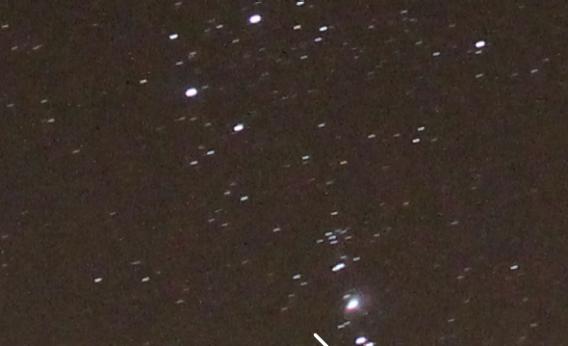Create a free profile to get unlimited access to exclusive videos, sweepstakes, and more!
Meteor Not?

So in my post about the Geminid meteor shower yesterday, I said that I didn't catch a single Geminid in my photos, and that's true. But going over them carefully, I happened to see something a bit weird, and I'm not sure what to make of it.
I took many shots of Orion, since it was perfectly placed over a tree, and any meteors going across it would make for a great photograph. I kept the exposures to 20-30 seconds, since the sky background was pretty bright, and I didn't want the stars to trail too much. While I didn't get any Geminids, I did happen to see this tiny streak:
You can see the three stars in Orion's belt at the top, and the fuzzy glow of the Orion Nebula, the nursery to a lot of young bright stars. And there, just below the third star in Orion's "dagger," there's that little blip. Is that a meteor?
I'm not sure. It's not a Geminid for sure; given Orion's position in the sky, a Geminid would leave a left-to-right streak in this photo. It's not in the previous or following photo, taken seconds earlier and later.
I'm not sure what to make of it. Most meteors would leave much longer streaks, but if the bit of cosmic debris happened to be heading almost straight toward me, it would leave a short streak due to perspective. If it's not a meteor, what could it be? Sometimes subatomic particles can leave similar streaks in a digital detector (these are typically called cosmic rays), but I've never seen one in my usual use of a regular camera. It may have been a bird lit by city lights, but the streak doesn't wiggle, and is so short that seems pretty unlikely. Same for an insect much closer to the camera.
It seems weird to think that a small bit of interplanetary debris sloughed off by some ancient collision between two asteroids millions of years ago and hundreds of millions of kilometers away may be the least unlikely explanation, but there you go.
Astronomy does sometimes provide an unusual perspective.


























